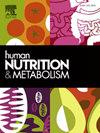胃食管反流病复发后的难治性症状可能与食物不耐受/吸收不良有关
IF 1.8
Q3 ENDOCRINOLOGY & METABOLISM
引用次数: 0
摘要
目的胃食管反流病(GERD)是最常见的胃肠道疾病。尽管进行了底襞手术,但仍有相当数量的患者出现难以治疗的胃食管反流症状。本回顾性试点研究报告了对因食物不耐受/吸收不良和胃幽门螺杆菌(H. pylori)而进行胃底吻合术后出现难治性GERD症状的患者的检测。方法采用氢气呼气试验筛查31例难治性胃食管反流术后患者的乳糖不耐受(LIT)和果糖吸收不良(FM)。组胺不耐受(HIT)的诊断是通过对组胺减少饮食和血清二胺氧化酶(DAO)水平的反应来确定的。检测幽门螺杆菌感染抗体和乳糜泻组织转谷氨酰胺酶抗体。结果在31例难治性胃食管反流患者中,有29例(95.5%)被诊断为食物不耐受/吸收不良,合并食物不耐受/吸收不良和/或幽门螺杆菌感染。H2呼气试验的使用导致31例患者中18例(58.1%)识别出LIT,而31例患者中15例(48.1%)表现出低血清DAO,表明HIT。31例患者中有8例(25.8%)经H2呼气试验鉴定为FM, 1例(3.2%)有幽门螺杆菌感染征象。结论在评估盆底重叠术后出现难治性胃食管反流症状的患者时,必须考虑食物不耐受/吸收不良和幽门螺旋杆菌感染的潜在影响因素。建议将食物不耐受和吸收不良列入胃底重叠后难治性胃食管反流症状的潜在病因。本文章由计算机程序翻译,如有差异,请以英文原文为准。
Refractory symptoms of gastroesophageal reflux disease after fundoplication may be associated with food intolerance/malabsorption
Objectives
Gastroesophageal reflux disease (GERD) has been identified as the most common gastrointestinal disorder. Despite undergoing fundoplication surgery, a significant number of patients continue to experience symptoms of GERD that are refractory to treatment. This retrospective pilot study reports on the testing of patients with refractory GERD symptoms after fundoplication for food intolerance/malabsorption and gastric Helicobacter pylori (H. pylori).
Methods
In this study, hydrogen (H2) breath testing was employed to screen for lactose intolerance (LIT) and fructose malabsorption (FM) in 31 patients with refractory GERD after fundoplication. The diagnosis of histamine intolerance (HIT) is determined by a response to a histamine-reduced diet and serum diamine oxidase (DAO) levels. For the detection of H. pylori infection antibodies against H. pylori and for search of celiac disease antibodies to tissue transglutaminase were determined.
Results
Of the patients with refractory GERD after fundoplication, 29 out of 31 (95.5 %) were diagnosed with food intolerance/malabsorption, combinations thereof, and/or H. pylori infection. The utilization of the H2 breath test resulted in the identification of LIT in 18 out of 31 patients (58.1 %), while 15 out of 31 patients (48.1 %) exhibited low serum DAO, indicative of HIT. FM was identified in 8 out of 31 patients (25.8 %) through the H2 breath test, and 1 out of 31 patients (3.2 %) showed indications of H. pylori infection.
Conclusion
In the evaluation of patients exhibiting refractory GERD symptoms following fundoplication, it is imperative to consider the potential roles of food intolerance/malabsorption and H. pylori infection as contributing factors. It is recommended that food intolerance and malabsorption be included in the list of potential etiologies of refractory GERD symptoms following fundoplication.
求助全文
通过发布文献求助,成功后即可免费获取论文全文。
去求助
来源期刊

Human Nutrition and Metabolism
Agricultural and Biological Sciences-Food Science
CiteScore
1.50
自引率
0.00%
发文量
30
审稿时长
188 days
 求助内容:
求助内容: 应助结果提醒方式:
应助结果提醒方式:


